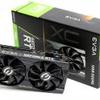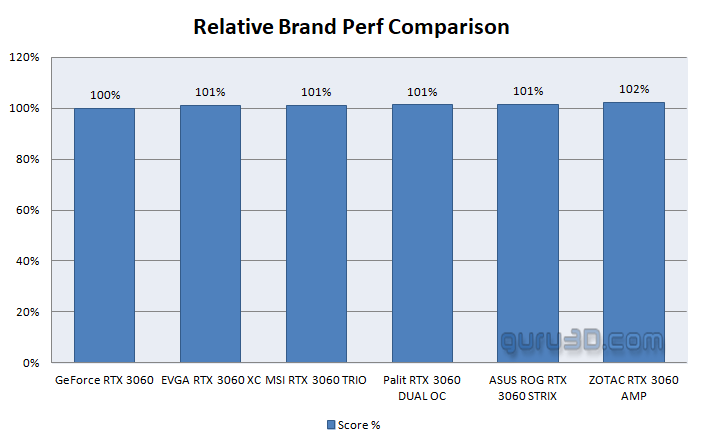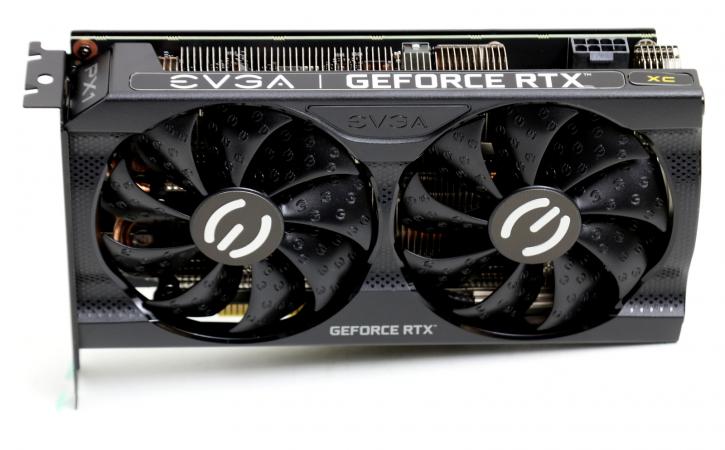Final words and conclusion
Final words
Let's talk defaults first. If only the GeForce RTX 3060 could be purchased for the advertised 329 USD, it would be an attractive product. However, we have to face the fact that the world is a place with cryptocurrency miners hogging every GPU they can get their hands on, chip shortages, and COVID, increasing the demand for home PC gaming. All these variables create a silly mix of shortages and raised prices. For the 3060 NVIDIA did implement a restriction for miners, hopefully, it'll help. The card series performance itself is decent, at best. We do want to note that the performance fluctuated quite a bit per game title. Overall I'd say the direct competitors are RTX 2070, and team Red's Radeon RX 5700 series are close in performance (though lacking DXR/DLSS/12GB). We had hopes that NVIDIA would have enabled the full shader processor stack, they didn't, and as such sometimes we feel the performance to be a little dim for something at this price level. The GeForce RTX 3060 Ti for this fact alone, absolutely would have my preference over the non-Ti mode, even with fewer graphics memory. Realistically the GeForce RTX 3060 is a product series we can still recommend if the price is right; 300 to 350 USD is steep for something with x060 in its name.
The above plot is a spread over five cards we have tested, NVIDIA did not release a reference product so the base RTX 3060 entry was simply downclocked to reference values. This however reveals a performance differential of roughly up to 2% on a spread of games at 2560x1440. Depending on resolution and game application, you'd can hit 3% or 4%. This means the (average) difference between the reference and fastest cards is roughly 2 maybe 4 FPS based on a 100 FPS average spread.
It does, however, offer performance levels in that RTX 2070 range, with the added benefit of 12 GB GDDR6 graphics memory included, and that I deem to be a sweet spot for the gamers that have a monitor with a resolution of up to 2560x1440. For some easier on the GPU gaming titles, Ultra HD as well. Once again, NVIDIA brings the advantage of DLSS, something that AMD is sorely missing on the latest 6000 series. It gives NVIDIA the resources of creating a leap in performance, as you do not need to run any form of antialiasing over the rasterizer/shading engine. That's a win any time in my book, as it's cheap extra performance. Be wary of DLSS, though; only quality DLSS 2.0 modes I deem worth it; otherwise, image corruption will be visible quite fast. Let's take Cyberpunk 2077:
Above: Ultra DLSS performance mode
Above: Quality performance mode
As you can see, there is substantial image degradation when selecting the DLSS ultra-performance mode. The grid in the back shows moire effects, also focus on the girl's shadow to the left. Also, the lettering on that metal plate behind the girl is much fuzzier. It is an incredible dilemma. Play around with the setting if you have an NVIDIA RTX graphics card and see for yourself what you deem to be acceptable. It ain't perfect, but it will free up your graphics processor, which can be used and utilized for other stuff.
We see a lot of over-engineered products these days, and while I am not badmouthing the SUPRIMs, STRIXs, and AMPs out there, to me for an X060 series product, perhaps a bit less is better. In that regard, EVGA nailed it, a fairly simplistic looming design, lovely small and compact, and no RGB. It's simply going to appeal to many people as drop it in, connect it, install a driver, and frag away. I like that. And if you want a bit more bling inside that rig, hey there are other options. Let's break down the test results though.
Cooling & noise levels
You've seen the FLIR images; the card is slightly lighting up, nothing really worrying though. Temps under stress load sits at a 65 degrees C marker, that's okay. Acoustics wise sure, this is not premium level silence; you can definitely hear the card, however at normal levels. There are far more competitive products to be found on that front.
Energy
More recently, we changed the way we measure power consumption to bring you more precise numbers. Pulling manufacturer registers with, say, Afterburner creates the problem that you never know precisely what you are measuring. TGP versus TDP versus TBP. With our new methodology, we accurately measure the graphics card's power feeds, that's the PCIe PEG connectors and PCI-Slot. As such, we display the total board power. I mean, you can measure the GPU solely (TGP), but you also feed other components, like Memory, ICs, and let's not forget cooling and RGB. This card reveals a typical gaming power draw of 170 Watt (typical).
Coil whine
The XC Gaming exhibits only minor amounts of coil squeal, very little, and it's hard to hear. In a closed chassis, that noise would fade away in the background. Graphics cards all make this in some form, especially at high framerates; this can be perceived.
Pricing
We have to discuss pricing though; the generic MSRP of the GeForce RTX 3060 sits at the 329 USD marker. This card ex-backplate and factory tweak costs 329,- (at least it should be priced like that). The version tested however is the factory tweaked one. Yes, it'll squeeze a bit more fragging powah on your monitor, but the price premium is precipitous, 389 USD. So that's 60 bucks for premium.
Tweaking
The graphics card is tweaked right out of the box. But can be pushed further manually. You'll reach 16 to 16.5 Gbps easily on the memory, a ~100 MHz on the Boost, and for the lucky ones even a notch higher (that's on top of that factory tweak). Important, slide open the power limiter. More power budget allows the GPU to do what it likes to do the best, go fast. Combined with the tweaks mention on the OC page, you'll sit in the realm of 2000~2050 MHz on the boost frequency. The 3060 is memory bandwidth limited on that 192-bit wide memory bus, so it likes more air to breathe in. the tweak we've been able to apply was 1.70 Gbps (effective data-rate) here you'll gain a lot of extra performance. Combined with that turbo in the 2000~2050MHz domain. Remember that values differ per workload and thus the game title. Remember, for our tweak to be called valid, it needs to pass four games in a full benchmark run at Ultra HD to be called stable.
Conclusion
While I had hoped that the product would be a tad more silent, I do like it. It's priced a notch too high for my taste though. Then again perhaps the backplate and 1882 MHz Boost frequency are worth the extra 60 bucks to you. Likely most people will not care at all if they can find a 3060 under 400 they'll probably just clock that buy button and be done with it. Yeah, these are strange times. NVIDIA did implement a new feature on the 3060 making it less attractive to cryptocurrency miners. So hopefully stock will be a little better with some decent volume available bringing down etailer prices. Of course, you can also purchase this product on the EVGA online store. EVGA has a complete and interesting product here, under the hood things look good in phase and component design. You can argue for a bit more cooling, but if it's sufficient, then we certainly will not complain. The card overall looks nice, perhaps a bit balmy. However as stated, I like that dark look, no RGB, simplistic, and compact. The performance is a notch higher than baseline, add a manual tweak you'll again gain at least 4% extra performance out of it. There's little wrong with that, and for you as a consumer, it is imperative to have choices as graphics cards have gotten more than expensive enough already. The 12 GB GDDR6 is really nice value that will help you at least a few years in your VRAM needs. The performance does not disappoint either; I mean, roughly RTX 2070 levels are the best comparative not that I can make. If you stick to 2560x1440 as a resolution, you'll be able to play some games with Hybrid raytracing as well, and while we cannot care the slightest bit about raytraced shadows, it's the quality reflections that make the difference for me. Just drive around in London in Watch Dogs: Legion, looks at water and fire reflections in Battlefield V as an example; that's where it makes a difference. You're going to need DLSS 2.0 compatibility in games to make the best of it. But all these variables have been inserted into the RTX 3060 for you. Surely the card is not a powerhouse, but you can frag along with acceptable framerates. The lasts lines then, yeah I like it; simplicity at its best. Now don't get me wrong because under the hood there's a refined phase design with all critical components cooler, the quality is there. However, the simplified non-RGB aesthetic look is something that I seem to dig. Obviously, Aesthetic taste is however horrendously subjective, I understand that as well.
It is a nice compact card that brings decent performance in the 2560x1440 WQHD domain, the cooling is certainly decent enough, though the acoustics are a bit more on the average side. We can definitely recommend it as a product all by itself, but we keep struggling with NVIDIA's current price levels and the artificial e-tailer inflation. Our advice is to keep an eye on the EVGA store itself, as that's where MSRP is in effect. However, that will leave open stock availability, which remains a challenge.
Sign up to receive a notification when we publish a new article.
Or go back to Guru3D's front page
- Hilbert, LOAD"*",8,1.






